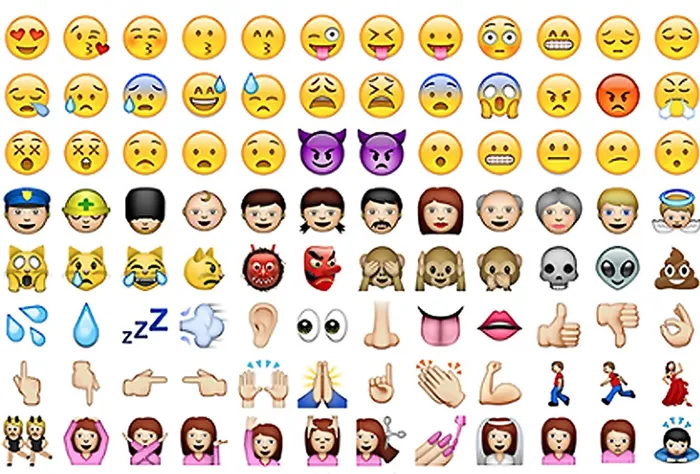Businesses urged to have emoji policy
Emojis

Emojis can be innocent or not, depending on the context and the sequence in which it is sent.
Image: Supplied
A single peach can ruin a career. The roll of the eyes, a friendship.
Emojis are now globally accepted as part of everyday language, a go-to tool when words fail us. But what happens when they say far more than what was intended.
This week a group of lawyers debated a loaded question; whether or not emojis are acceptable in the workplace.
During a webinar, they examined how emojis can blur the lines between friendliness and misconduct, and why context, culture, and relationship dynamics matter when using emojis at work.
Cliffe Dekker Hofmeyr employment lawyers Anli Bezuidenhout and Yvonne Mkefa agree that a workplace policy on emojis is definitely needed.
They were joined by forensic and legal linguist, Dr. Zakeera Docrat who explored the impact of emojis on workplace communication, legal boundaries, and cultural sensitivities.
“Four thousand years on and we are back to the same language,” said Docrat, referring to the symbols our ancestors used centuries before language as we know it.
She said context was the most important issue when using emojis.
Docrat was the expert who was called to testify in court about the central central role in the sexual harassment case against Eastern Cape Judge President Selby Mbenenge.
She used the winking emoji as an example saying that it can mean different things depending on the context.
“Is it suggestive or is it agreement? And if it's agreement, then why, if it's a colleague, are you not just sending the thumbs up emoji?
Why would you send the winking emoji? Because suddenly now we're blurring the lines…Just don't send that winking emoji because there's room for interpretation of how that emoji would be understood by the recipient.”
While emojis play a central role in the Mbenenge case, Docrat says there have been many other court cases globally in which they were also important.
She also questioned the use of the tongue emoji. “Are you joking or are you being insulting? And we know there's the tongue out emoji with the closed eye, and the one open eye or both eyes closed. Which one is an insult or which is being playful. You cannot make a series of insults, put the tongue out emoji and then say it was a joke,” Docrat said.
She highlighted several of the emojis under discussion in the Mbenenge trial, especially the fruit and vegetable emojis, like the peach which represent a vagina.
“As soon as the conversation is not about fruit and vegetables, it's not about going into the supermarket and shopping according to a list, and it is sexual in nature, then we know exactly what the peach represents, we know exactly what the aubergine represents, and what the banana represents.” Docrat said these were “universal understandings”.
Ultimately it all boiled down to language, power, and law and this influenced the interpretation of the emojis. She questioned whether it was appropriate to respond to a colleague with emojis. “If a male,senior colleague sends me the red heart emoji, and I don't have that type of relationship where I know them very well, and I get sent a red heart, I would immediately be offended and ask, why are you sending me that?”
Docrat argued for a workplace policy about communication which was specific to that company’s needs and updated frequently.
Bezuidenhout said that during sexual harassment investigations they found it relevant to know who initiated the conversation and who used emojis first.
“To me, rightly or wrongly so, I take that into consideration. If the discussion is professional, and it's with references to emojis that makes sense in a professional context, and then all of a sudden someone starts introducing hearts, etc., then that most likely indicates that it came from there or that it was initiated from there.” she said.
Mfeka said when analysing messages containing emojis, they looked at the frequency of the messages, the time because someone may also be targeting an employee who's vulnerable at a certain point in time of the day.
“What we often see is that in some of the critical investigations, people actually start deleting those messages because they're thinking that they were participating in this whole thing. That becomes more problematic when you have to present the evidence.”
The lawyers said that depending on the colour of emoji used, it could have racist undertones.
Mfeka said that companies should have clear guidelines for emoji use, and it would differ from industry to industry. In addition, companies were multi-generational and so staff input was important.
“These characters which are seemingly harmless and endearing, suddenly they're actually becoming a critical form of communication. What is quite critical is that employers must look into their policies because there are companies or employers that already have policies that deals with social media. Review those policies,” said Mfeka.
Docrat recommended emojipedia as one source of emojis and their meanings.